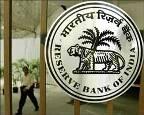 | « Back to article | Print this article |
Rates need to be cut further
 Analysts and the media have near-unanimously approved the latest monetary policy update of the Reserve Bank of India which has left key interest rates unchanged, while indicating that its accommodative stance will continue until recovery becomes more robust.
Analysts and the media have near-unanimously approved the latest monetary policy update of the Reserve Bank of India which has left key interest rates unchanged, while indicating that its accommodative stance will continue until recovery becomes more robust.
But it is possible to question whether this halfway house is the right place to be in right now.
First, the central bank itself admits that though there are signs of economic revival, these are not broadbased. Second, Governor Subbarao underlines the need to increase both the demand and supply of credit. Third, he identifies a key mismatch between the perceptions of corporates (credit is not forthcoming) and banks (there are no takers for credit) which needs to be resolved.
"The challenge is to see that there is a convergence between the demand and supply (of credit)," he adds. Obviously, a lot more needs to be done to get the economy back to where it was before the slowdown hit.
There are several good reasons why key interest rates ought to have been brought down in order to continue the unfinished task. There is still considerable slack in the economy, indicated by the lack of desire or plans for private capital investment.
The jobs that have been lost have not been regained. What we see right now is dusting off plans for hiring again in the not too distant future.
A cut in the cash reserve ratio would have meant putting more liquidity into the hands of banks and the economy. This would have gone to meet the massive borrowing requirement that the government has announced and which has had all analysts worried.
This, plus RBI fine-tuning its current special accommodation measures would have ensured that the CRR change, while signaling a downward movement in interest rates, would not have created additional liquidity and generated inflationary pressures.
If this were to be accompanied by a cut in the repo rate, then the signal for lower interest rates would have been powerful. Since the 1990s, there has been a secular decline in the interest costs of Indian business which has played a key role in making it competitive.
This, and other factors, have enabled it to live through falling tariffs which still remain high. Plus, India's interest rates remain high compared to its competitors. Low interest rates are desirable so long as they do not bring in inflation as was the case before the global credit bubble burst.
The current inflationary situation is confusing. The wholesale price index, which incorporates the input costs of industry, is running negative. However, the consumer price index, which affects you and me, is running high. Particularly worrisome is high food prices.
But the key issue is that the solution to this lies on the supply, not demand, side. The ills and the remedies are well known. There is a huge food buffer stock and every likelihood of future procurement policies adding to this.
There are also serious roadblocks in the way of inter-state movement of foodgrain.
The more deeprooted malady is India's low productivity in food crops. Demand management is not the answer to these ills.
One important part of the current fiscal stimulus is coming through the employment guarantee programme which is putting income in the hands of the very poor to buy the food they need. Another is seeking to create much-needed infrastructure.
China has administered a massive stimulus via its banks and continues to invest heavily in infrastructure, and neither analysts nor the global media are complaining.
Lower bank lending rates, however, usually go with lower deposit interest rates. It is hardly right to cut interest rates for depositors when consumer price inflation is running high. But that is a sacrifice they need to be asked to make to recreate jobs lost.
This is India's way of delivering social security. The long-term solution is for banks to manage with lower interest rate spreads by raising productivity.
For an economy to become more and more competitive its cost of financial intermediation must go down. If the government is being soft on bank employees then that needs highlighting.
All this is not to deny the primacy of inflation control but to argue that there is a right medicine and a wrong medicine, and rising supply of goods and services, incomes and tax revenues form a virtuous cycle that has a benign effect on inflation.
